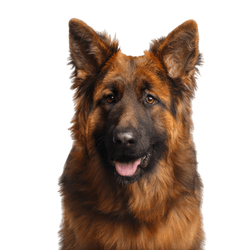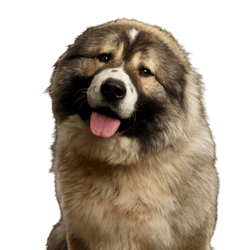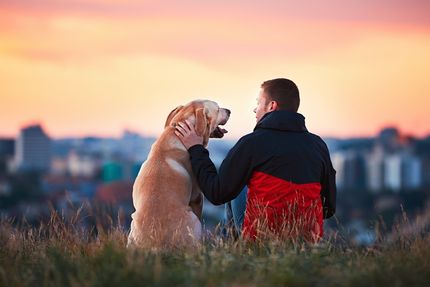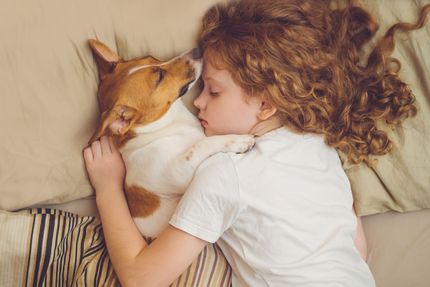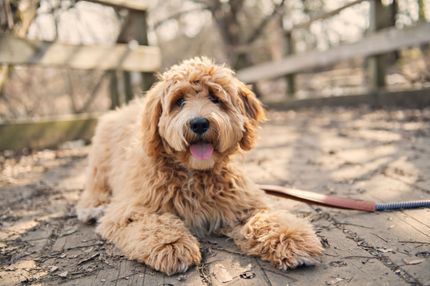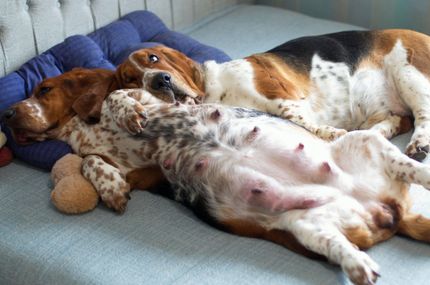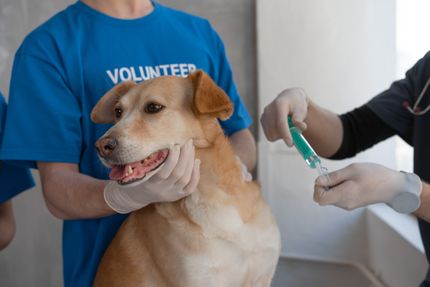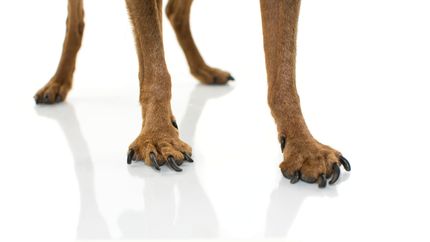Facts & Origin
The Caucasian Shepherd Dog is a mixed breed whose parent breeds are the Caucasian Ovcharka and the German Shepherd Dog. The purpose of this breed is to create a strong and intelligent guard dog that protects house and property. It is a very proud and brave dog that is lively and alert. His coat is usually dense and longer than the German Shepherd. He is also slightly larger and stronger than his German counterpart, but still affectionate and friendly when socialized. The Caucasian Sheepdog is very loved and respected by his family. It is considered one of the best dogs to protect a home and take care of children.
What are breed characteristics of this mix dog?
A Caucasian Ovcharka Dog and German Shepherd mix breed has a densely coated, angular and muscular appearance. The body is strongly built and is usually seen with rather long legs. The neck is muscular and the chest is deep. The head is small compared to the body, with a flat skull, medium sized muzzle, bushy ears that sit erect, and brown or hazel eyes. The color of the coat ranges from red-gold to black to light gray, but without white markings. The body can reach a height of 59-70 cm and a weight of 45-65 kg.
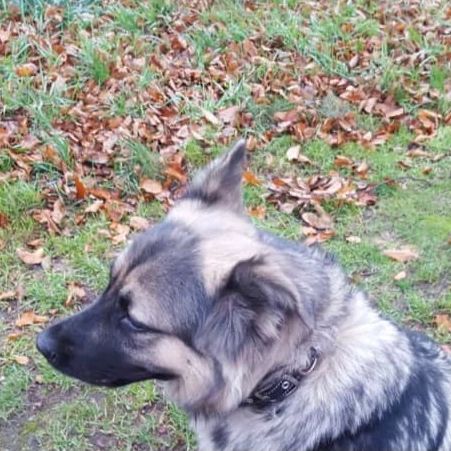
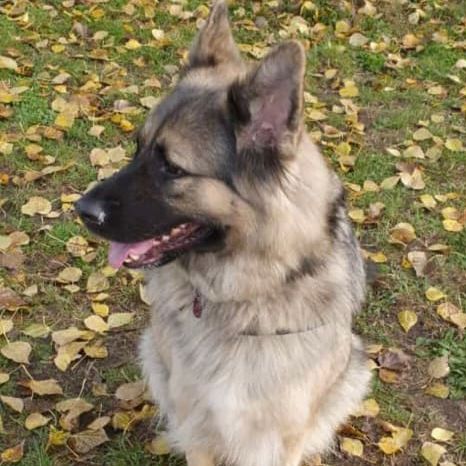
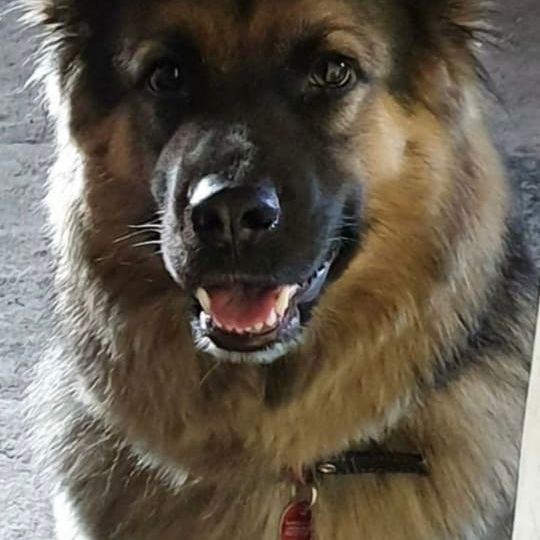
| Alternate Name | - |
| Origin | Germany - Russia |
| Life expectancy | 9 - 13 years |
| Care requirements | low-maintenance |
| Activity level | high |
| FCI group | not recognised |
| AKC group | not recognised |
| KC group | not recognised |
More German Shepherd mixes
More Caucasian Shepherd Dog mixes
Attitude, character and temperament of the breed
Possible character traits of Caucasian Ovsharka and German Shepherd Mix - Such is probably his nature.
Caucasian Ovsharka and German Shepherd are two of the most popular dog breeds around the world. A mix of the two breeds can bring a special package of intelligent behavior, cozy affection and alert instinct. Easy for humans to train, this combination is a good choice for families with children of all ages.
The Caucasian Shepherd Dog is a loyal and passionate protector that is unconditionally loyal to its owner without question. They are very alert and become active even when they have to defend their territory. This breed is very good-natured and therefore easy to train. Overall, they tend to be alert and attentive, but also friendly and affectionate to other people.
On the other hand, the German Shepherd is also a very intelligent and powerful companion dog. However, unlike the Owtscharka, it has a stronger growth potential, which is why it is often used as a working dog in professional applications. He is also very adaptable, both to his habitat and to people and animals. He has a very even temperament and is good-natured, sincere and loyal.
A mix of both breeds can be a truly impressive dog. It enjoys company and needs it to be comfortable. They will be very loyal to the owner in return for spending so much time together with them. However, with the right training, it is also possible to maintain a good balance between adventurousness and calmness. They will try to be protective of their surroundings, but at the same time be gentle and loving with other people and animals.
It can be a challenge to find the right character, but as a rule, the Caucasian Ovcharka and German Shepherd mix is a great dog that has a lot to offer and can be an ideal companion dog for families and individuals.
Character
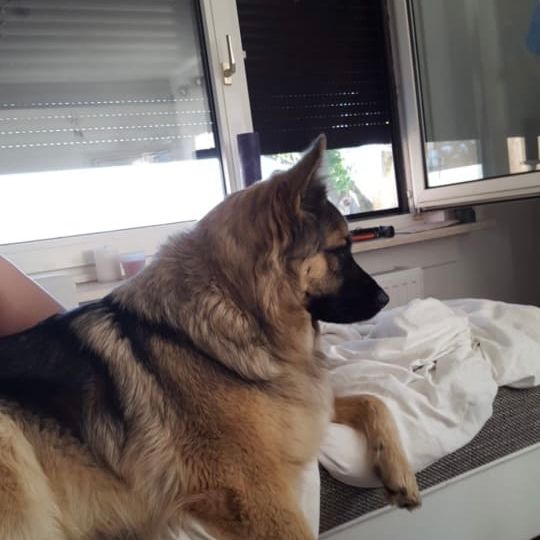
What diseases can occur in Caucasian Ovsharka and German Shepherd Mix.
The Caucasian Ovsharka and German Shepherd Mix is a popular breed known for its intelligence, beauty and loyalty. Although they are mostly used as family dogs, they are also popular as guard dogs and assistance dogs. However, before you decide to acquire such a dog, you should know the known diseases and ailments of this breed. In the following list you will find some of the typical diseases of Caucasian Ovsharka and German Shepherd mixed breeds:
- Hip Dysplasia (HD). This is a hereditary disease that affects the hip joints and causes painful and stiff movements. Currently, there is no cure for hip dysplasia, but regular medical treatment and physical therapy exercises can help alleviate symptoms and protect those affected from further complications.
- Muscular dystrophy. Muscular dystrophy is a rare disorder that causes muscle weakness and atrophy. The disease usually affects the large muscle groups and can lead to difficulty walking, difficulty speaking and loss of performance when running.
- Allergies. These are common diseases in all dog breeds, but they can be especially severe in Caucasian Shepherd Dog mixes. Symptoms range from itching, watery eyes and difficulty breathing to skin rashes and gastrointestinal distress.
- Heart disease. Some of these mixed breeds are prone to heart disease, such as heart failure or valvular defects. Both types have a tendency to worsen with age, so regular checkups by a veterinarian are recommended to catch potential problems early.
- Eye Disease. Many Caucasian Shepherd Dog mixes suffer from eye problems that can range from retinal detachments to traumatic injuries to cataracts. Regular eye exams at the veterinarian can help detect such problems early and have them treated.
This list is not exhaustive and there are several other diseases or ailments that can affect these dogs. Therefore, it is important to always consult your veterinarian before purchasing such a dog to determine susceptibility to certain diseases and to initiate specific treatment if possible.

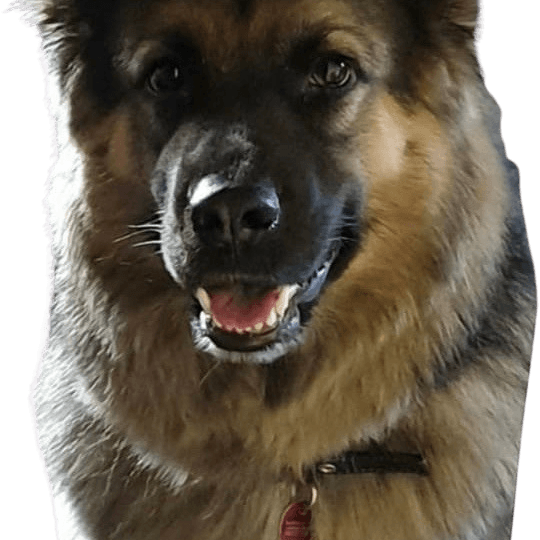
What does this mongrel look like?
The Caucasian Ovcharka and German Shepherd Dog Mongrel usually has a very thick double coat. It is long and relatively smooth. Usually it is mostly light brown or black, but sometimes it can wear wolf colors. The top of the dog is usually lighter than the rest of the coat. Sometimes it can also have rust-colored tones. The contrast between the light blanket of the coat and the dark undercoat makes the dog's appearance very attractive.
| Fur length | long - medium |
| Fur | flat coated |
| Ear shape | Standing Ears - Triangle |
| Tail | fanned out |
| Anatomy | massive, strong, massive, strong |
| Size ♀ | 55 - 70 cm |
| Weight ♀ | 22 - 45 kg |
| Size ♂ | 60 - 75 cm |
| Weight ♂ | 30 - 50 kg |
| Suitable For | - |



Known Diseases
Hip dysplasia (HD)
Hip dysplasia (HD) is a genetic condition in dogs where the hip joint is not shaped properly. This leads to pain, stiffness and restricted movement.
Elbow dysplasia (ED)
Elbow joint dysplasia is a chronic disease complex of the elbow joint of fast growing dog breeds.
Eye diseases
Often occur with allergies and intolerances.
Knee injuries
Some breeds, unfortunately, especially suffer from knee injuries of various kinds.
FAQ
-
These dogs have similar traits to their parents, including intelligence, activity, and loyalty. Most are very affectionate and love to interact with their families. They are very alert and attentive, but also good-natured and compatible.
-
These mixed breeds usually grow between 50 and 90 centimeters tall and generally weigh between 25 and 40 kilograms.
-
These dogs can live about 8 to 10 years.
-
Yes, you can. These mixed breeds are very intelligent and learn well. It is advisable to start training early so that your dog gets used to different commands.
-
They should visit a veterinarian regularly for vaccinations and other medical treatments. They also need regular brushing and bathing several times a week. A monthly fingernail trimming is also part of the necessary care.

